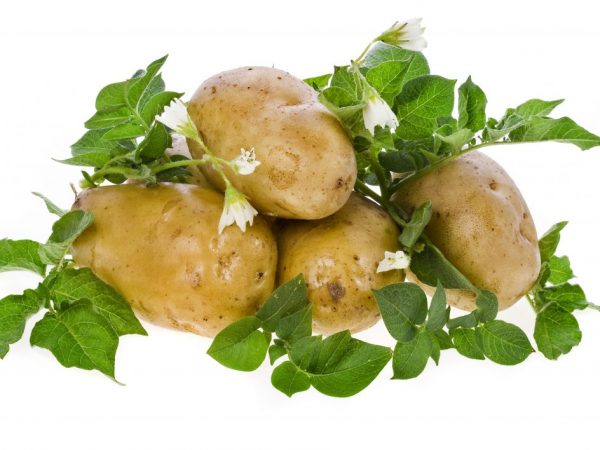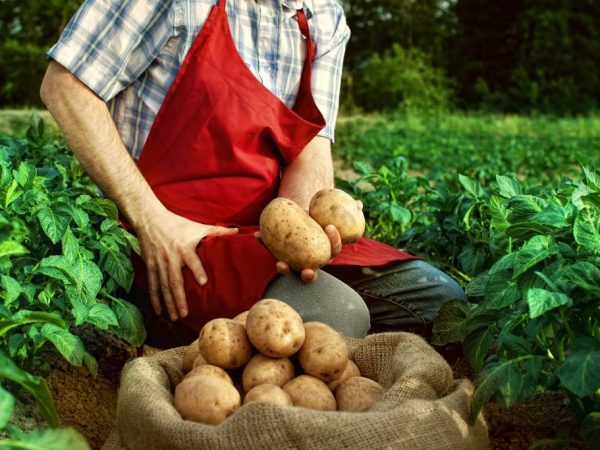The best potato varieties for the Northwest region
Potatoes love sunlight and warmth, and in the North-West region, where autumn comes in mid-August, winter in November, and the summer heat lasts 2 weeks at most, not all types of potatoes will be able to fully grow and ripen. Today, potato varieties have been developed for the North-West region that are resistant to climate change and have an early ripening period.

The best potato varieties for the Northwest region
Variety selection
The choice of a variety is influenced by its characteristics:
- Ripening time. According to the description, it takes 50-60 days from the moment the first shoots emerge to the full maturation of the early species. For the Leningrad, Moscow and Kaliningrad regions, medium-early varieties of potatoes are also suitable, the ripening period of which is from 70 to 90 days.
- Disease susceptibility. In the Northwest region, it is permissible to grow varieties resistant or moderately susceptible to diseases, tolerating cold weather and constantly high humidity.
- Productivity.
- Ease of storage, non-susceptibility to spoilage.
Popular varieties
Zhukovsky early
According to the description, this variety stands out among the domestic species. This is a productive variety: up to 450 kg are harvested from a hundred square meters. The flesh of the fruit is white, the tubers are oval, with a pink skin. Potatoes of this species are resistant to weather changes in the North-West region and to the golden nematode, which fills the entire site with high humidity.
The species has no immunity to scab and late blight.
Sorcerer
The sorcerer is a mid-early species with a yield of up to 400 kg per hundred square meters and is distinguished by a pleasant sweetish taste. The pulp of the variety is light cream in color, does not darken in boiling water, the peel is yellow.
The variety is characterized by uneven growth of tubers: they differ significantly in size. The advantages of this species are ease of care, drought resistance, high keeping quality, transportability. Potatoes do not suffer from sprout breakage.
Resource and Bronnitsky
Gardeners should not neglect old mid-season varieties such as Resurs and Bronnitsky. Such varieties of potatoes grow well in the Leningrad and Vologda regions.
The yield of the Resource variety is as follows: it brings 450 kg per hundred square meters even in the most northern regions. It is weakly affected by viral diseases.
The Bronnitsky variety has good seed characteristics. In Russia it is one of the best varieties for growing in cold and humid climates. The peel of the fruit is thin, light golden in color.
Bronnitsky can easily compete with well-known German and Dutch varieties: his yield is 540 kg per hundred square meters. At the same time, root crops have a weight of 90-120 g.
Charoite
Charoite is a new variety; in the North-West region it is called St. Petersburg Skorospelka. The first fruits can be harvested 60 days after planting. yield - 320 kg per hundred square meters. Charoit has good taste, light yellow rind.For an early maturing species, it is preserved almost perfectly: the keeping quality rating is 96%. It has a high resistance to cancer, moderate - to late blight and scab.
The disadvantages of the Charoite variety include its tendency to be affected by the golden nematode, so some gardeners continue to look for new types of potatoes, similar to Charoite, but more resistant to diseases and pests.
Manifesto and Damaris
A medium early type of Manifesto potato is considered to be more productive than other similar varieties. With an optimal combination of fertilizers and proper care, 460 kg are harvested from 100 sq. m. Root crops are red.
The mid-early type Damaris also has an excellent yield - 450 kg per hundred square meters. Potatoes have a beige peel, oval shape, light yellow flesh, delicate taste. Damaris keeps well for a long time.
Manifesto and Damaris are considered popular varieties in Russia, moderately susceptible to late blight and almost unresponsive to pathogens of cancer, scab, both types of mosaics, leaf-rolling virus and golden nematode.
Dutch potato varieties

Dutch varieties are popular in our country
In the Netherlands, summer is short and unpredictable, the weather can be called hot 2-3 weeks a year, and the humidity of the air and soil is almost 100%: all this resembles the conditions of the North-West region in Russia, which is why the cultivation of Dutch varieties of potatoes is so popular in our country.
Benefits of foreign varieties
- Productivity.
- Insensitive to temperature extremes, good tolerance to drought and high humidity.
- Resistant to harmful viruses and bacteria.
- Good storage and transportability of tubers.
- Aesthetics.
Red Scarlet and Impala
Red Scarlet will suit lovers of young potatoes. Up to 500 kg of crops are harvested from a hundred square meters. The tubers are reddish, very smooth. Gardeners appreciate the variety for its immunity.
The maximum yield of the early Impala is 370 kg per one hundred square meters. Impala is immune to cancer and golden nematode, reacts calmly to short-term drought, undemanding to the type of soil. Impala is susceptible to late blight.
Fresco
It takes 60-70 days for Fresco to fully mature. Productivity - 230 kg per one hundred square meters. Gardeners recommend harvesting Fresco tubers as early as possible, until potato late blight appears on them.
This variety is insensitive to crayfish and nematodes, 50 to 50 to viruses, black and common scab. Medium-sized yellow and round potatoes are suitable for making chips and crispy fries.
The Fresco variety is stored poorly: the slightest increase in temperature in the cellar provokes germination.
German potato varieties
German varieties are also great for growing in the Northwest region, especially in the Leningrad, Arkhangelsk, Kaliningrad and Murmansk regions of Russia.
Adretta
Adretta brings 450 kg from 100 sq. m, has large yellow tubers, excellent in taste. The tops grow quickly, the tubers are formed early, the variety tolerates drought calmly.
Adretta is perfectly stored, provided that the tubers are harvested on time and the temperature in the cellar is not too high. In good weather in Russia, the species is resistant to late blight, cancer and viruses, but vulnerable to common scab, rhizoctonia and black leg.
Karatop
According to the description, the yield of the Karatop variety averages 440 kg per 100 acres of land. Cultivation is carried out in the Leningrad, Moscow, Vologda and Kaliningrad regions. Tubers can be tried as early as 50 days after the emergence of the first shoots.
One fruit comes out weighing up to 100 g. Karatop is weakly susceptible to late blight, cancer, nematode.


